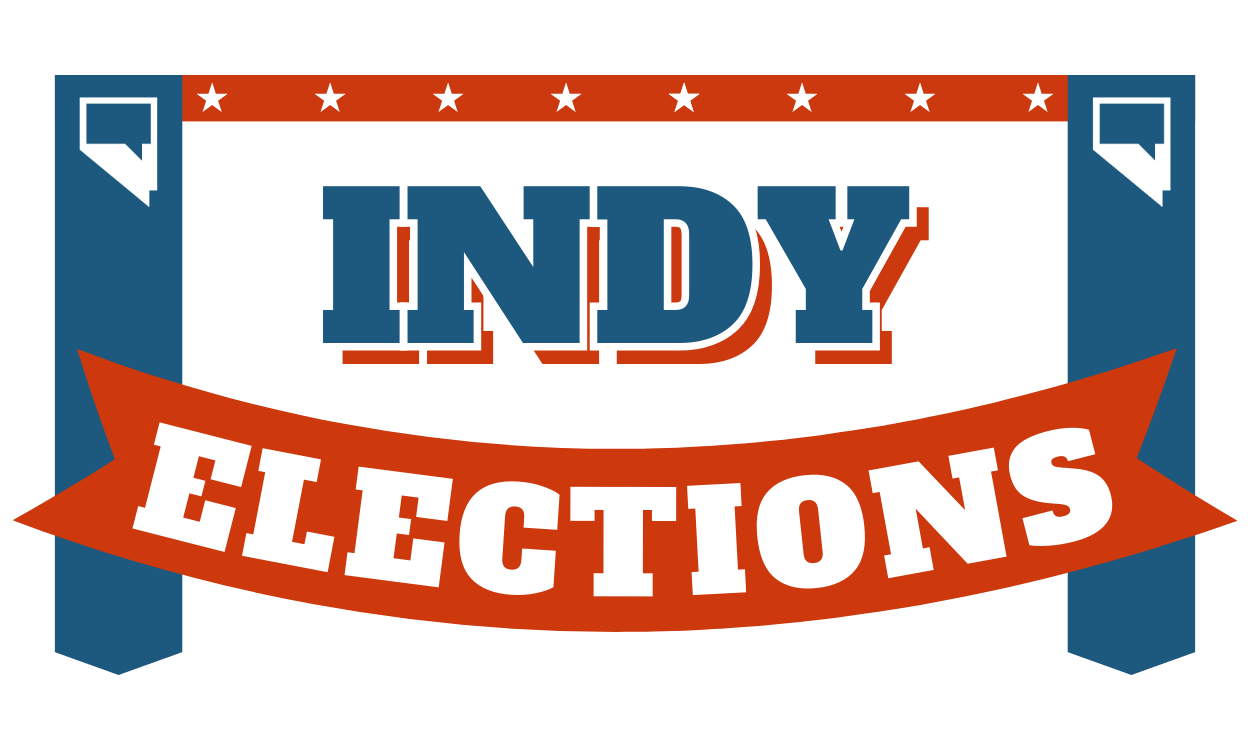Nevada Senate fundraising: Rosen donors more active, hail from more states than Brown’s

A year before her bid for re-election, Sen. Jacky Rosen (D-NV) had already raised money from all 50 states and received the maximum amount from people who collectively poured six figures into the coffers of Democratic senators in other swing states, according to a Nevada Independent analysis of federal campaign finance data.
Meanwhile, Republicans seeking to unseat Rosen — led by front-runner Sam Brown — have significantly less robust donor bases, with fewer and less active donors, less geographic diversity and less of a history of donating in Nevada’s past Senate races.
The findings underscore Rosen’s massive financial advantage as an incumbent and the national attention that Nevada’s Senate race is receiving from active political donors, three campaign finance experts told The Indy.
The analysis specifically looked at where in the country donors are from, past donating patterns by top contributors and whether donors also gave money in Nevada’s 2022 Senate race. The analysis only includes itemized donations from individuals made in 2023 — typically donations of $200 or more. These donations make up two-thirds of individual contributions to Rosen and more than half of Brown’s haul from individuals.
If there’s any indication of the race’s importance, it’s the money. Rosen — one of several vulnerable incumbent Democrats whose seats are up in 2024 with the party’s control of the Senate at stake — has raked in more than $19 million in donations since entering office in 2019, including more than $11 million in 2023, ninth highest among all Senate candidates. At the end of the year, she had $10.6 million in cash on hand, meaning she has spent about half of the money she has raised.
Brown is the front-runner among Republican hopefuls, but his financial haul significantly trails Rosen. He has raised about $3 million — 45th among all Senate candidates — but has the backing of national Republicans and their expected fount of outside money.
In the 2022 Nevada Senate race, incumbent Sen. Catherine Cortez Masto (D-NV) raised more than $67 million throughout the course of the campaign and spent all but $3 million. Her Republican opponent, Adam Laxalt, spent almost all of the $19 million he brought in. Cortez Masto ultimately won by fewer than 8,000 votes.
Experts said this 2024 disparity is partially because Rosen has been able to fundraise for more than five years for her re-election bid, while GOP candidates only announced their intentions to run last year. They added the gap will likely narrow once the field dwindles after the June 11 primary.
“Small donors, especially in Nevada who only have $100 to spend, want to make sure it goes to the nominee,” said Jeremy Gelman, a political science professor at UNR. “Once we see a winner in the summer, I would expect to see a significant spike in fundraising.”

Rosen’s top donors were interested in multiple competitive Senate races; Brown’s less so
One trend was noticeable among top donors (defined as giving the maximum amount of $6,600) to Rosen and Brown — they sent their money far beyond Nevada.
The Indy’s analysis looked at which candidates received at least $10,000 combined from Rosen’s top donors — a total of 196 individuals across 18 states. Of the six candidates receiving the most money from top Rosen donors, five are Democrats running for Senate in competitive races in Montana, Ohio, Pennsylvania, Wisconsin and Michigan. Sen. Jon Tester (D-MT) received the most money (more than $275,000) from Rosen’s top donors.
The findings underscore Rosen’s position as one of the most vulnerable senators up for re-election in 2024 — her seat is one of seven occupied by a Democrat rated as a “Toss-Up” or “Lean Democratic,” according to ratings from the nonpartisan Cook Political Report. Republicans, meanwhile, only have two Senate seats at risk of being flipped, according to Cook’s ratings.
Top donors to Brown — 73 individuals across 17 states — also opened their checkbooks to help candidates in competitive Senate races around the country.
Tim Sheehy, a Montana Republican running to challenge Tester, received the most money from Brown’s top donors, raking in $52,800 from eight Brown contributors. West Virginia Gov. Jim Justice, who is running for the state’s open Senate seat currently held by Democrat Joe Manchin, received the third-most money from Brown’s top donors at around $36,000 from six contributors.
“Political science research shows that certain donors, often donors that give a lot of money, seek out competitive races,” Gelman said. “And I think that's exactly what you see going on right here.”
Sen. Tim Scott (R-SC), who is running for re-election after ending his presidential bid, received the second-most money from Brown’s top donors. Top Brown donors also gave to a swath of well-known Republican members of Congress, including House Oversight Committee Chair James Comer (R-KY) and Rep. Patrick McHenry (R-NC), who memorably served as speaker pro tempore last year.
However, Brown’s top donors were less likely to support outside candidates, with about half of them donating to no other candidate (about 90 percent of Rosen’s donors gave money to other 2024 hopefuls).
Rosen and Brown's top donors also gave hundreds of thousands of dollars to PACs and joint fundraising committees, which raise money in conjunction with other committees. Super PACs can accept unlimited donations.
Rosen’s top donors were much more likely to make large donations to PACs. Twenty-nine of her donors made six-figure donations to PACs, while only two of Brown’s top supporters made similarly large contributions.
Rosen’s top donors combined to give more than $5 million to two funds supporting President Joe Biden: Biden Victory Fund and Biden Action Fund.
Reid Hoffman, a top Democratic donor and venture capitalist, gave the maximum donation to Rosen and also gave $4 million to the Republican Accountability PAC, a Republican-run group looking for the party to move on from Trump, $1.5 million to the Free and Fair PAC and $1 million to the Mainstream Democrats PAC.
The PAC for the American Israel Public Affairs Committee, a strong supporter of Rosen, also received close to $900,000 from Rosen’s top donors.
Brown’s top donors were most likely to give money to PACs backing Republican efforts to keep control of the House of Representatives, and they also gave money to committees supporting Senate Minority Whip John Thune (R-SD) and Rep. Dan Crenshaw (R-TX).
Rosen donors more likely to have donated in Nevada’s 2022 Senate race
The 2022 Senate race between Cortez Masto and Laxalt had the smallest margin of victory among all Senate races that year despite Cortez Masto’s massive financial advantage.
Data shows that a sizable part of Rosen’s fundraising base — around 36 percent of donors in 2023 — were people who also gave money to Cortez Masto. Together, these individuals gave more than $1.8 million to Rosen.
On the Republican side, 21 of Brown’s donors — around 14 percent of all of his contributors — previously gave to Laxalt, and they have poured around $250,000 to Brown’s campaign. Brown ran an ultimately unsuccessful insurgent primary campaign against Laxalt in the state’s 2022 GOP primary.
Sarah Bryner, the director of research and strategy at OpenSecrets, a nonprofit that follows money in politics, thinks that Laxalt donor disparity could spell trouble for Brown.
Laxalt — a longtime Trump ally who co-chaired the former president’s 2020 campaign in the state — had the support of the Trump wing of the GOP, while Brown notably eschewed endorsing Trump until last month. If Laxalt donors are so far not backing Brown, Bryner said that could indicate the Trump-aligned voters are not yet on board with him — though the campaign finance data comes from before Brown endorsed Trump.
“Republicans [are] in a very tricky position because they want to run candidates like … Sam Brown — they want a return to some more mainstream candidates,” Bryner said. “But, from what we're seeing here, the donors don't.”
Gelman from UNR said he would expect Brown, if he is the nominee, to bring in a different set of donors than Laxalt, who did not raise much money from small-dollar donors and instead relied on outside spending to help his campaign. But he emphasized that it is still very early in the cycle.
“It's interesting that there isn't sort of a set of Republican donors that are consistently funding Republican Senate campaigns in Nevada,” Gelman said. “I think there's enough other complexities going on that it's hard to say what else is going on.”
Other GOP Senate candidates have raised significantly less money.
Jeff Gunter, the former U.S. ambassador to Iceland under Trump who has raised the second-most money in the GOP primary behind Brown (around $400,000), received donations from 12 people who also gave money to Laxalt, about 16 percent of his total donors.
And 7 percent of donors to Jim Marchant, the former Nevada assemblyman and secretary of state candidate, also gave money to Laxalt two years ago. Marchant has raised less than $350,000.
Six donors gave to both Brown and Gunter, and one donor gave to Marchant and Brown.
A handful of donors have given money to candidates on both sides. Nine people gave money to Rosen after donating to Laxalt two years ago, including UFC CEO Dana White, who also gave to Rosen in 2020 but primarily donates to Republicans. Eight people also donated to Brown after giving money to Cortez Masto in 2022, including Troy Herbst, who helps run the Terrible Herbst oil company.
Republican donors from fewer states than Rosen donors
Since the start of 2023, Rosen has received donations from people in all 50 states, with the most donors coming from California, followed by Nevada. In 19 states and Washington, D.C., Rosen received money from at least 100 unique donors.
In 2023, nearly 200 donors gave the maximum amount allowed under law to Rosen, but 5 percent were from Nevada. That pattern follows a similar path as Cortez Masto in 2022.
Bryner from OpenSecrets said that this kind of fundraising trend shows how big-dollar donor support is more about maintaining control of the Senate than anything else.
“I bet you that most people who don’t live in the state, but who give to the people who are in the Cook swing or toss up districts couldn't tell you the first thing about Jacky Rosen's policy proposals,” Bryner said.
Meanwhile, Brown received donations from people in 47 states — all except Rhode Island, Vermont and West Virginia. He received the most donations from Nevada-based donors, followed by California and Texas, where Brown previously lived. In four states, he had at least 100 unique donors.
Gunter has received donations from people in 22 states, with California and Texas leading the way. He’s received donations from six Nevadans. Marchant’s donors come from 23 states, and Florida — where he previously lived — makes up more than a third of his donors. He’s received donations from 16 Nevadans.
Gelman said the geographical distribution is unsurprising.
“To be successful in a really high-priced election, like a Nevada Senate race, they fundraise in California and in Texas, and in New York and Florida,” Gelman said. “That's just sort of where the money is.”

